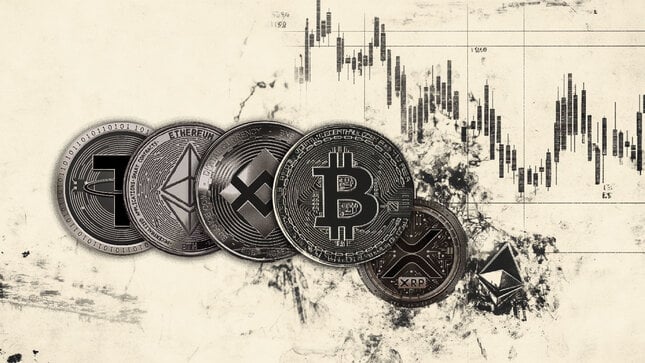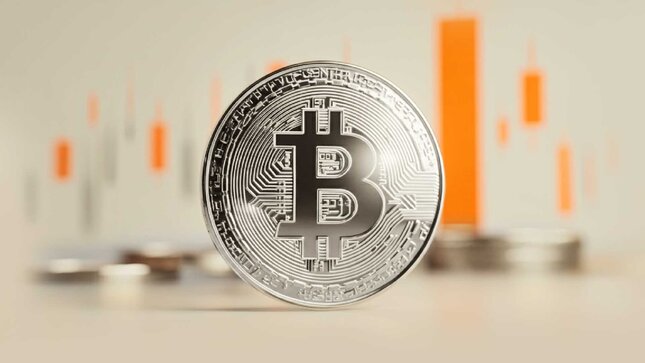Dow Jones Industrial Average Exchange rate
Editors’ Picks

EUR/USD holds steady below 1.1800
EUR/USD moves sideways in a narrow channel below 1.1800 as the market volatility remains low ahead of the New Year holiday. On Tuesday, investors will pay close attention to the minutes of the Federal Reserve's December policy meeting.

GBP/USD retreats below 1.3500 as trading conditions remain thin
GBP/USD corrects lower after posting strong gains in the previous week and trades below 1.3500 on Monday. With the action in financial markets turning subdued following the Christmas holiday, however, the pair's losses remain limited.

Gold holds above $4,300 after profit taking kicked in
Gold retreats sharply from the record-peak it set at $4,550 and trades below $4,400, losing more than 3% on the day. Growing optimism about a Ukraine-Russia peace agreement and profit-taking ahead of the New Year holiday seem to be causing XAU/USD to stay under heavy bearish pressure.

Bitcoin, Ethereum, and XRP bulls regain strength
Bitcoin, Ethereum, and Ripple record roughly 3% gains on Monday, regaining strength mid-holiday season. Despite thin liquidity in the holiday season, BTC and major altcoins are regaining strength as US President Donald Trump pushes peace talks between Russia and Ukraine. The technical outlook for Bitcoin, Ethereum, and Ripple gradually shifts bullish as selling pressure wanes.

Bitcoin Price Annual Forecast: BTC holds long-term bullish structure heading into 2026
Bitcoin (BTC) is wrapping up 2025 as one of its most eventful years, defined by unprecedented institutional participation, major regulatory developments, and extreme price volatility.
Majors
Cryptocurrencies
Signatures
DOW JONES or DJIA
The Dow Jones Industrial Average (DJIA), also called “Dow Jones” or “the Dow” is a price-weighted average of 30 significant stocks traded on the New York Stock Exchange (NYSE), approximately two-thirds of which are represented by companies producing industrial and consumer goods. “Price-weighted” means that each company is assigned a weighting based on its stock price. It was created by The Wall Street Journal editor Charles Dow in 1896.
If the DJIA rises by 10 points comparing to yesterday, it means that the cost of purchasing the 30 stocks in the index today is $10 higher than purchasing those same 30 stocks yesterday, taking into account stock splits and dividends.
Over time, the DJIA can be used as a benchmark for the economy
HISTORIC HIGHS AND LOWS FOR DOW JONES
- All-time records: Max: 29368 on 13/02/2020 - Min: 35.32 on 27/07/1970
- Last 5 years: Max: 29368 on 13/02/2020 - Min: 17282 on 21/08/2015
* Data as of February 2020
ASSETS THAT INFLUENCE THE DOW JONES THE MOST
- Currencies: Oil.
- Commodities: USD, EUR and JPY.
- Bonds: T-Bond (Treasury bond is a marketable, fixed-interest U.S. government debt security).
- Indices: S&P500 (American stock market index based on the market capitalizations of 500 large companies having common stock listed on the NYSE), NASDAQ (benchmark index for U.S. technology stocks), WTI (West Texas Intermediate is a grade of crude oil used as a benchmark in oil pricing, the underlying commodity of NYMEX's oil futures contracts) and RUSSELL 2000 (the most common benchmark for mutual funds that identify themselves as "small-cap").
ORGANIZATIONS, PEOPLE AND ECONOMIC DATA THAT INFLUENCE THE DOW
Since the Dow Jones is a benchmark of American stocks, what will impact its value is related to all those decisions and figures that affect the results of big companies in the United States of America. That is, among others:
- Economic indicators of inflation (CPI, PPI,...), consumer confidence (as Michigan Consumer Confidence Index), growth (GDP), employment (Non Farm Payrolls) and salaries (Average Hourly Wages). An economic indicator is a statistic about an economic activity. Economic indicators allow analysis of economic performance and predictions of future performance.
- interest rates decided by the Federal Reserve System (Fed) which is the central banking system of the United States of America. It was created on December 23, 1913, with the enactment of the Federal Reserve Act, after a series of financial panics led to the desire for central control of the monetary system in order to alleviate financial crises. Jerome Powell is the 16th Chair of the Fed.
- Fiscal policy, trade deals, business laws decided by the US administration (Donald Trump, the 45th, 47th and current president of the United States, assuming office on January 20, 2025), but also by the US Treasury Department (Scott Bessent, serving as the United States Secretary of the Treasury as part of the Cabinet of Donald Trump) and the US Department of Commerce which is an executive department of the federal government concerned with promoting economic growth (Jeremy Pelter, United States Secretary of Commerce).
- Energy prices (electricity, oil,...), because they have impact on production costs for those companies. A fixed-rate tariff sets the cost of energy for a certain amount of time, while prices on a variable tariff can go up or down according to the market. The price of energy depends on a range of different supply and demand conditions, including the geopolitical situation, the national energy mix, import diversification, network costs, environmental protection costs, etc...